Indian Tiger Drive - How to get the Most from it
We love wildlife, and wild places, and have visited many of the great African national parks. We have now visited a large number of Indian Tiger parks and had a wonderful time. The parks, and the way of viewing the wildlife, is quite different from Africa though so I have decided to share some notes on how to get the most from your time in Indian parks.
Indian National Park Drive:
Game drives generally happen twice in the day and the exact timing changes through the year. The first drive enters the park at dawn (between 5.30 and 6.30 am) and leaves four to five hours later. The second drive will enter the park at mid-afternoon and leave at sunset and is typically a three hour drive. You will be returned to your lodge for lunch and a rest between drives.
A packed breakfast will be provided, at a suitable stopping point, during the morning drive.
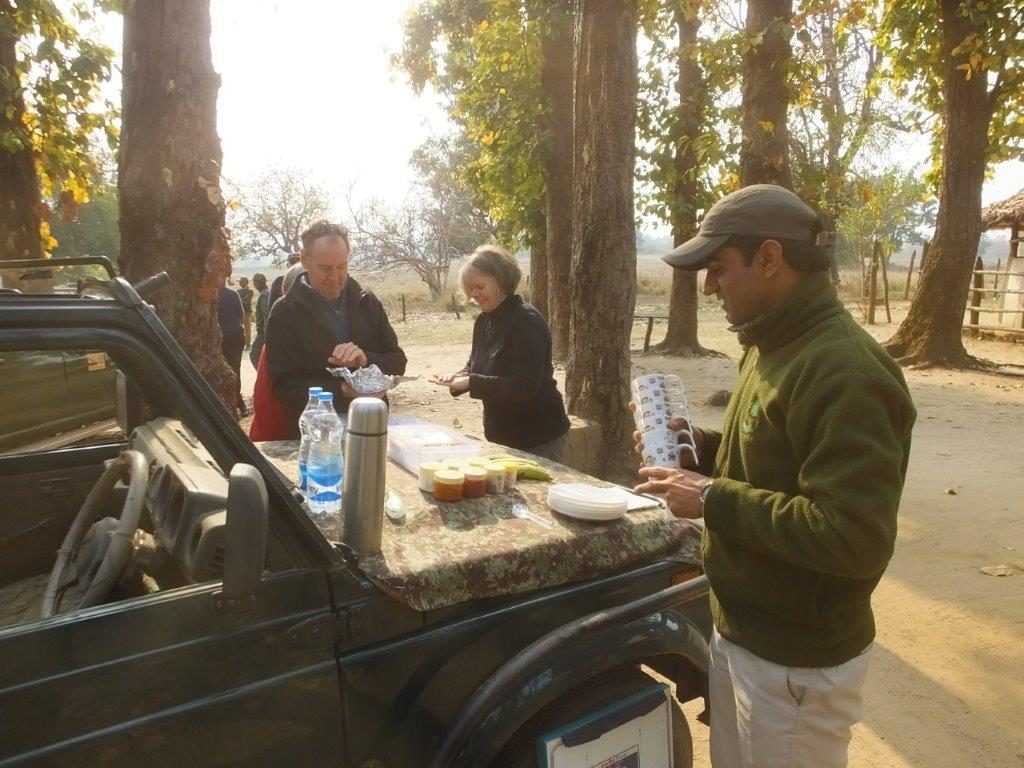
Picnic Breakfast
Most parks will be closed for at least half a day per week so at these times no visitors enter the park.
The park authorities are very strict about timings and drivers will be fined or banned from the park if they are late leaving. For this reason, please respect your driver’s need to get to the gates on time.
The number of vehicles allowed in the park, and in any zone, at any time, is very strictly controlled. So your driver will have limitations on where they can go on any particular drive. A good tour operator will ensure you get to see all the zones but will focus on the most productive ones for that year.
Entering the Park:
To enter the park, if you are a foreign national, you need to have your passport with you so the driver can take this to the park officials at the entry gate. The passports are used to verify that the booking is correct and is for the right people. Some parks also have a camera charge so you will need to give this to your driver so he can pay the authorities before each drive. A receipt should be provided for these payments.
Vehicle:
The most commonly used vehicle is the Gypsy, an Indian built small jeep, which can seat eight people in total. It is open-topped and excellent for viewing and photographing wildlife. Although it does not feel very big when a large tiger approaches!
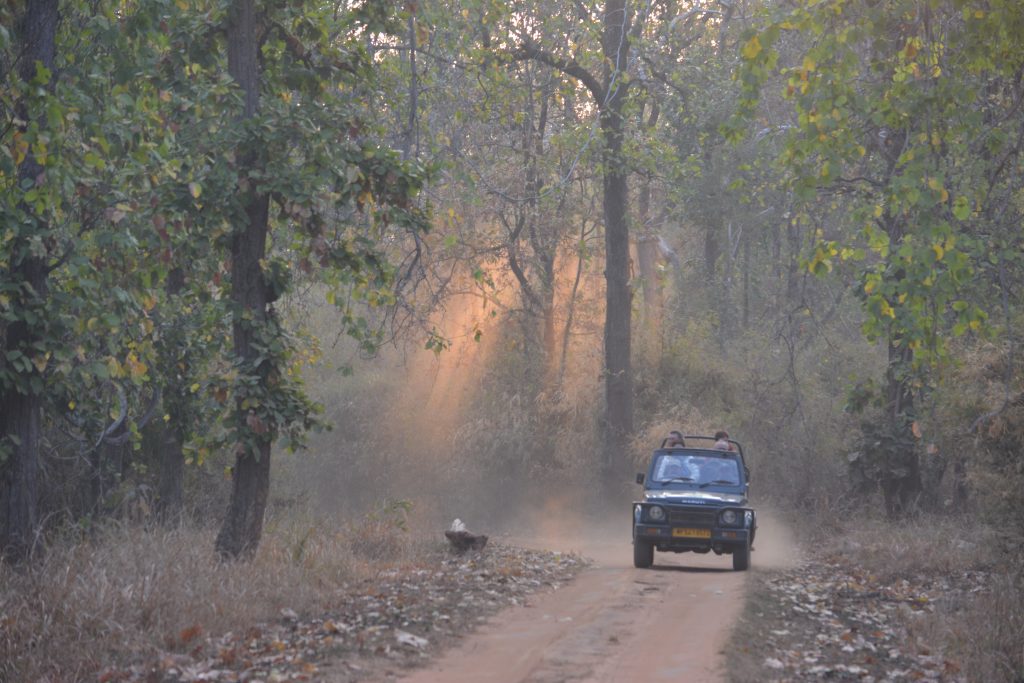
Gypsy - Commonly used for Tiger Tours
Your Driver and guide:
Each vehicle will have its own driver who will take you to the gate where a guide will be allocated to you, at random, for that particular drive. Occasionally, the lodge will also provide you with a naturalist who will provide further information during your tour. As, typically, there will only be four visitors in the Gypsy it can feel as if there are a lot of staff for each drive. I believe it is deliberate policy of the park authorities to create a lot of direct employment of locals and, in my view, is a very shrewd measure. By contributing so much to the economic well being of the locals the parks are greatly valued by the local communities which in turn leads to better protection of the animals as poachers are unable to operate without the knowledge of the people who live nearby.
Your driver’s job is, strictly, to just drive the vehicle with the guide doing the wildlife spotting, but we found the driver was at least as good as the guide at finding wildlife. (Remember he spends his whole life driving in the park.) The driver is generally provided by the lodge, whereas the guide is provided by the park, so it is a good idea to ask for the same driver for the whole of your stay. By doing this, you can ensure that he knows what you want and also what you have seen. I, for example, enjoy travelling at a slow speed so that there is a chance of spotting all wildlife. By telling the driver this he can ensure that, for all your drives, you get what you want. It is worth withholding the tip until the end of your stay and be generous if he/ she has followed your requirements.
For advice on tipping of your driver and guide see my blog on the subject.
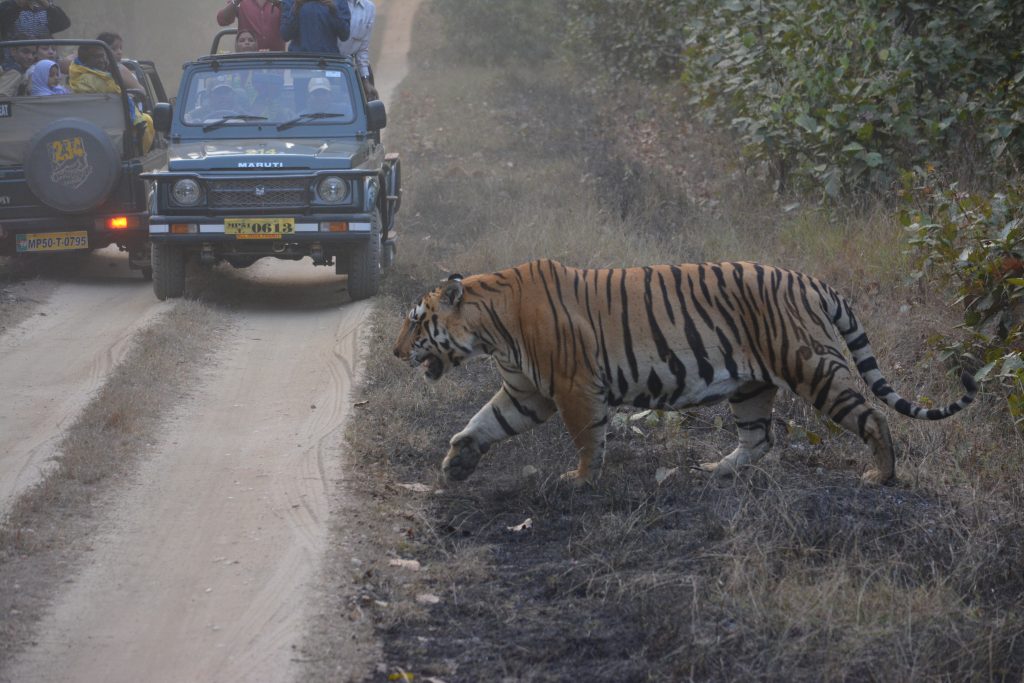
The Gypsy does not seem very big when a large tiger approaches.
Conditions on the Drive:
You will encounter a wide range of conditions on your drive and you need to be prepared for them all. As mentioned earlier, the vehicles are open so you are exposed to the elements.
Temperature & Sun:
The temperature can vary widely from being very cold at dawn, in winter, to being very hot in the afternoon. For your dawn drive it is worth taking a good coat and, maybe a woolly hat and also accept the blankets the driver offers you. Once you start moving the apparent temperature will drop very quickly.
The strength of the sun, as the day moves on, needs to be respected by ensuring you apply sun cream and have water and a good hat.
Dust:
Conditions can be very dusty and following other vehicles can be quite an unpleasant experience. Be prepared to ask your driver to hang back to reduce the impact but also come prepared. Ensure you have good sun glasses to protect your eyes but it is also a good idea to have clear glasses that you can wear in the low light conditions at dawn or dusk. Have a snood (a fabric tube you can wear around your neck or face) ready to protect your nose and mouth and filter out some of the dust.
If you have expensive camera equipment ensure you have dust protection for this too. Many people use pouches that protect the cameras but it is also quick to get the camera into use when that tiger comes along.
Approach to game viewing:
The Indian park guides and drivers tend to be completely obsessed with seeing tigers to the exclusion of almost everything else. The tiger is, undoubtedly, the most spectacular of sightings but your tour of the parks will be so much more rewarding if you take in everything else that it has to offer. Ask your driver to travel slowly and stop at waterholes so that you have a chance of spotting the smaller wildlife and stop when you see something. It can be very interesting watching the bird life or a troop of lemurs, for example, and very often by focusing on the smaller things you will be rewarded by a big sighting!
Be prepared to move away from the gaggle of other cars. Earlier this year in Bandhavgarh national park a large male tiger could be seen asleep in the long grass about 200 meters away. After about thirty minutes, we asked our driver to move on as the tiger was not moving and a very large group of vehicles had congregated around us. The driver and guide were reluctant to drive on but eventually did so. After driving for thirty minutes we spotted four tiger cubs on the edge of some woods. The mother was off hunting. We had the best part of an hour watching these young tigers, on our own, and we even witnessed the excitement when an Indian wild boar ventured a bit too close.
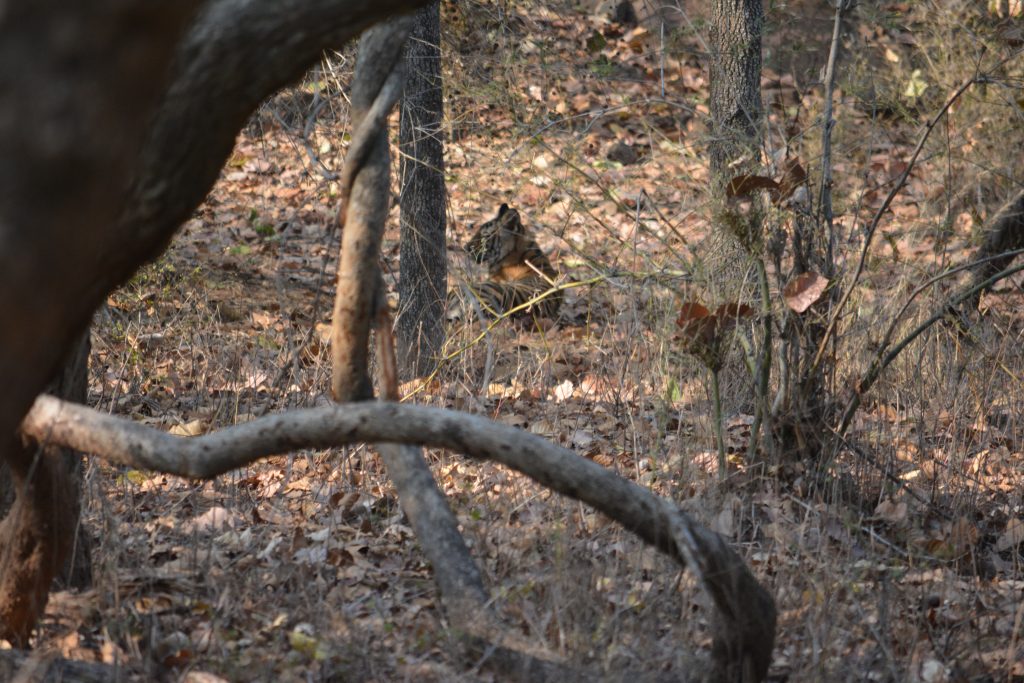
One of four tiger cubs
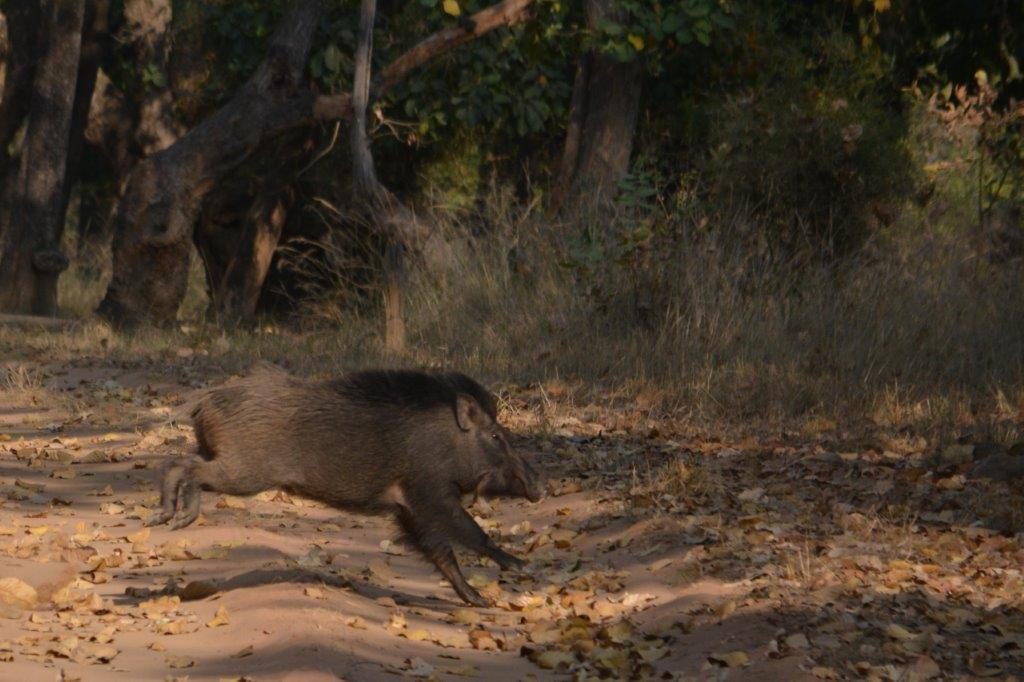
Indian Wild Boar at full speed. It came a little too close to the tiger cubs
On another occasion we watched an oriental honey buzzard systematically consuming a bee’s nest. It was amazing to watch but everyone else was staring at the road waiting for a tiger to appear.
As well as camera and video equipment a good pair of binoculars will really improve your game viewing as you can watch birds up close or looking into the bush to see animals in detail.
See Indian national park visit blogs here
Check List for your Drive:
- Request the same driver for all your drives
- Passport for entry to the park
- Cameras, Video cameras & binoculars
- Clothing for all conditions
- Warm coat and hat
- Sun hat, sun glasses & sun cream
- Water
- Dust protection
- Snood
- Sun glasses & clear glasses
- Dust cover for cameras
- Cash for tipping the guide (the driver can be tipped at the end) & for paying camera charges.
If you are interested in visiting follow this link.
